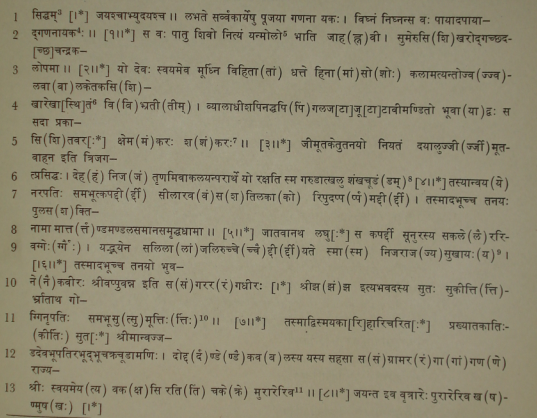|
The Indian Analyst
|
North Indian Inscriptions |
INSCRIPTIONS OF THE SILAHARAS OF NORTH KONKAN
the Bhiwaṇḍī tālukā of the Ṭhāṇā District. Nāgāmbā, which bounded it on the south, may be Nāgāva, which lies 1.60 km. to the south. Kāṭiyālaka may be Kāṭaī, which lies in its vicinity. Fleet identified Pūagambā with Pogaon, ‘half a mile east by north from Chāvindrē.’ Tōkabalāpallikā, the second donated village, cannot now be traced, but one of its boundary villages Talāvalīpallikā, may be Talavalī in the Ṭhāṇā tālukā. Similarly, Kalibalāyachōlī, which formed the northern boundary of the third donated village, may be the same as Kōlivalī about 10 km. north of Bhiwaṇḍī. The other places cannot be identified.[1]
Text[2]
[1] It seems from Fleet’s remarks in Ep. Ind. Vol. XII, p. 252, n. 2, that a transcript of the first plate of this
grant was published in the Asiatic Researches, Vol. I (fifth ed.1806). That edition is not available to me.
|
|||||||||||||||||||||||||||||||||||||||||||||||||||||||||||||||||||||||||||||||||||||||||||||||||||||||||||||||||||||
| > |
|
>
|








